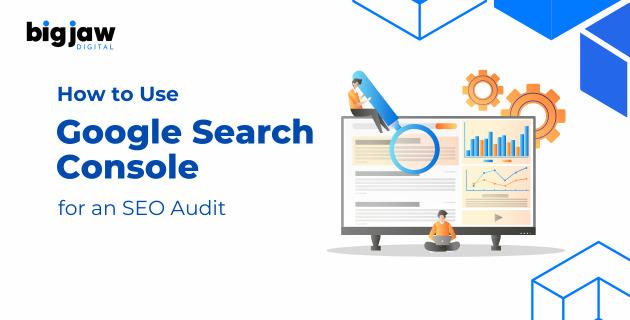

Search engine optimization (SEO) is not a one-and-done process. Rather, it is a continuous effort that requires constant monitoring and adjustments, especially as search engine algorithms, Internet trends, customer behaviors, and other factors change.
This is why it’s necessary to conduct regular SEO audits using tools like Google Search Console.
What is an SEO audit?
The easiest way to understand an SEO audit is to think of it as a comprehensive health checkup of your website. It detects issues affecting your ranking in search engine results, allowing you to resolve them and increase visibility and traffic to your website.
An audit is a crucial step in technical SEO, where the main priority is improving website structure and technical elements rather than focusing on creating and optimizing content. It should be done regularly — ideally every three to six months to ensure your site is optimized for search engines.
What is Google Search Console?
Google Search Console used to be known as Google Webmaster Tools. It helps you track and optimize your website’s presence in Google Search results. It delivers essential insights into your site’s performance and the steps you can take to improve its visibility.
Although the tool doesn’t manage everything related to your SEO strategy, it’s indispensable for conducting a technical SEO audit.
How do you do an SEO audit using Search Console?
Follow these steps to perform a technical SEO audit using Google Search Console:
Set up and verify your website
To start, you should set up and verify your website on Search Console. Simply log into your Search Console account and add your website’s URL. You will receive a prompt to verify your ownership of the site through various methods, including adding an HTML code to your site or linking your Google Analytics account.
Check index coverage
One of the most critical areas to examine during your SEO audit is your website’s index coverage. This tells you which pages have been indexed by Google so far, pinpoints any errors preventing proper indexing, and provides warnings about potential issues.
The “Coverage” section will show you:
- Errors referring to pages that Google couldn’t index
- Valid pages which are pages that have been successfully indexed
- Warnings pointing to pages with potential issues that have been indexed
You should prioritize fixing errors, such as 404 pages, server errors, or robots.txt exclusions, because they can block crucial pages from showing up in search engine results.
Analyze mobile usability
As mobile devices now deliver half of all Internet traffic, you should prioritize making your website mobile-friendly. This will ensure an uninterrupted user experience and help improve your search rankings.
Google Search Console delivers a “Mobile Usability” report that identifies any issues affecting your website’s performance on smartphones and tablets. Make sure to pay attention to:
- Clickable elements being displaced and positioned too close to each other
- Whether the text is too small to read
- Content being too wide or too long for mobile screens
Fixing these issues will make mobile visitors more likely to stay on your website, giving you more chances to convert them.
Review search performance data
Go to the “Performance” tab on Search Console to get invaluable insights into how your website is performing in Google’s search results. You will find metrics like clicks, impressions, average click-through rate (CTR), and average position in the search results.
This data can show you:
- Which keywords your site is ranking for
- Your site’s average ranking for specific keywords
- How users are engaging with your website
Understanding which pages are driving traffic and which keywords are performing best can help you refine your content strategy and focus on areas for improvement.
Inspect URL issues
Search Console’s URL Inspection tool lets you check how Google indexes individual pages. It shows any crawling errors and allows you to request Google to re-crawl and index pages after you’ve made the necessary fixes and updates.
This feature is especially helpful after you’ve launched new pages or implemented major updates and want to call Google’s attention to those changes.
Monitor your site’s backlinks
Backlinks the links pointing to your pages from other websites are among the factors Google uses to determine your site’s ranking and authority. Google Search Console’s “Links” report shows you which websites are linking to yours and what anchor text they use, helping you identify possible link-building opportunities.
The report can also show spammy and irrelevant backlinks that could harm your site. Make sure to disavow harmful links using Google’s disavow tool.
If you’re a small or medium business owner, Google Search Console is an effective, low-cost way to uncover issues in your website and improve its visibility online. You can use it to perform thorough technical SEO audits to find and resolve issues holding your site back on search engine results pages.
However, because technical SEO processes usually require plenty of time and close attention to detail, conducting SEO audits on your own can be overwhelming. That’s why many small and medium business owners partner with a professional SEO company. Such agencies have dedicated SEO experts who can audit your site, saving you time and effort while delivering reliable results.
Don’t let technical issues stop your business from gaining the visibility it deserves. Harness the power of technical SEO and boost your website’s online presence today.

